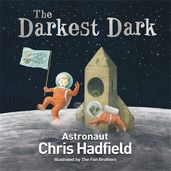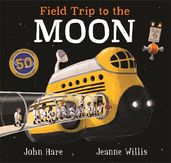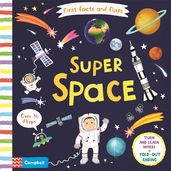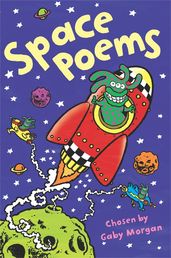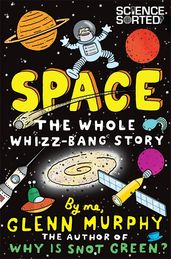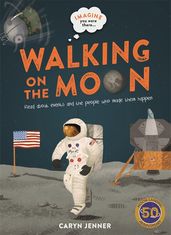The best space books for kids of all ages
If your little one dreams of exploring distant planets, they’ll love these out-of-this-world children’s books about space.
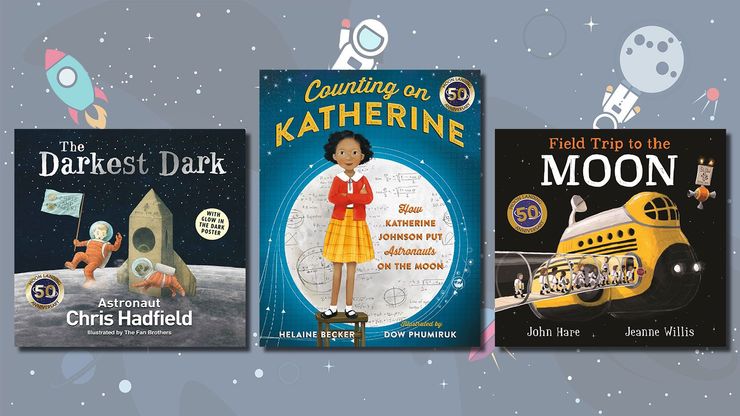
Thoughts of journeys into space are irresistible to curious little minds, so it's no wonder that when we ask them what they would like to be when they grow up, so often they answer, an astronaut! From space stories for kids from authors such as astronaut Chris Hadfield to books full of facts which will wow even the most inquisitive little ones, here are some of the best space books for kids.
What are the best space books for babies and toddlers?
First Explorers: Moon Landing

This First Explorers book has chunky pull, push and slide mechanisms perfect for little hands, helping toddlers discover how astronauts first landed on the moon. Rocket into space with the Apollo 11 astronauts as they make history with the first moon landing in this fun, colourful board book.
What are the best space books for kids aged 3-5?
The Darkest Dark
by Chris Hadfield
Written by astronaut Chris Hadfield, this beautiful new picture book of The Darkest Dark comes with a fun pull-out glow-in-the-dark poster. Inspired by Chris’s childhood, The Darkest Dark is his first children’s book. Young Chris is a very important astronaut, but there’s one problem – he’s scared of the dark, sure that lots of scary aliens lurk there. But when he watches the Apollo 11 moon landing, he realises that to achieve his dreams, he needs to overcome his fears.
Field Trip to the Moon
by Jeanne Willis
Blast off to the moon with this witty and fun adventure story! One student gets more than she expected when she gets separated from her class during a field trip to the moon. Sitting down with her crayons to draw a picture, she realises she’s not alone! And she’s about to find out what happens when we reach out to those who are different to us.
Super Space
by Lon Lee
Discover the wonder of the moon, stars and planets when you travel into space with Super Space. Full of colourful scenes and fun rhymes, as well as flaps, a turn-and-learn wheel and a fold-out ending, this novelty book helps little ones to learn while they play.
Amazing Machines Roaring Rockets Activity Book

Full of noisy rockets, big rockets, rockets that are blasting off and rockets that are full of astronauts, this interactive activity book ensures that kids have lots of fun while they learn. With plenty of counting, drawing, matching and colouring activities, as well as two pages of stickers, this is a must for any budding space explorer.
What are the best space books for kids aged 5-9
Counting on Katherine

A mathematical genius, Katherine Johnson helped to make the Apollo 11 moon landing possible, and author Helaine Becker interviewed Katherine especially for this book. Young Katherine was a curious child with a love of counting, and she longed to learn everything she could about the universe . . . From Katherine’s childhood as a gifted student to her heroic work at NASA, this is the inspiring story of an African-American woman who made history.
Astronaut in Training
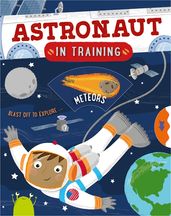
If the child in your life wants to be an astronaut when they grow up, this is the perfect book for them. Full of fun facts about the life of an astronaut and packed with activities, Astronaut in Training tells you everything you need to know about space, astronomy and what it’s really like on the International Space Station.
Space Poems
by Gaby Morgan
This cosmic collection of poems from Paul Cookson, John Rice, Liz Brownlee and many others will be much-loved by little space fans. Full of poems about the moon, stars, planets, aliens, the Milky Way and even space sheds, blast off with Space Poems.
Space: The Whole Whizz-Bang Story
by Glenn Murphy
This funny and informative book will help to answer all those burning space questions that little ones may have. What is a black hole? What’s the difference between stars and planets? How do we know that galaxies are millions of years old? Full of doodles and incredible facts, Space: The Whole-Whizz-Bang Story contains no boring bits!
Space Jokes
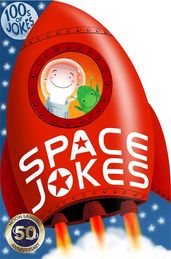
‘How do astronauts serve dinner? On flying saucers.’ This book, shaped like a rocket, is packed full of over one hundred hilarious jokes all about space. Guaranteed to have both adults and children in stitches, this book is the perfect gift for space lovers with a cheeky sense of humour.
Imagine you were there... Walking on the Moon
by Caryn Jenner
Filled with stunning photography, comprehensive artwork, eye-witness accounts and step-by-step details of the moon landing, this illuminating book will transport your child to the surface of the moon and let them walk in the boots of an astronaut.
